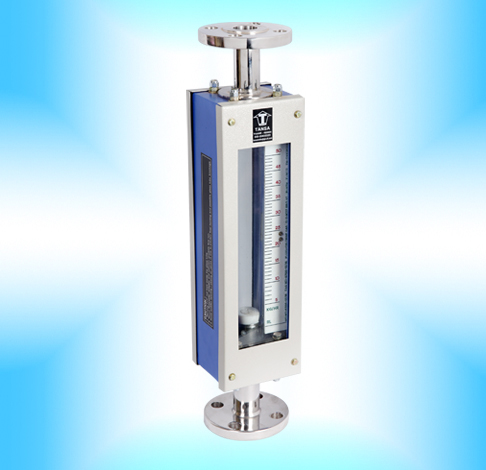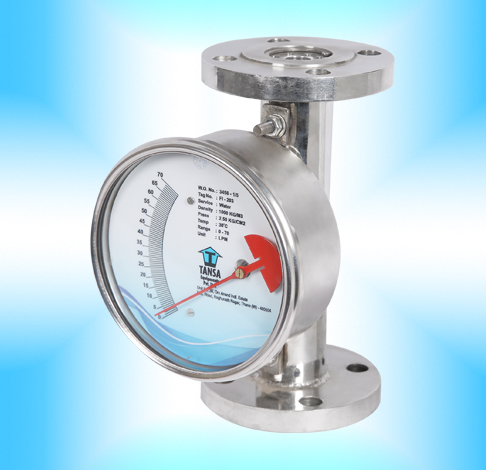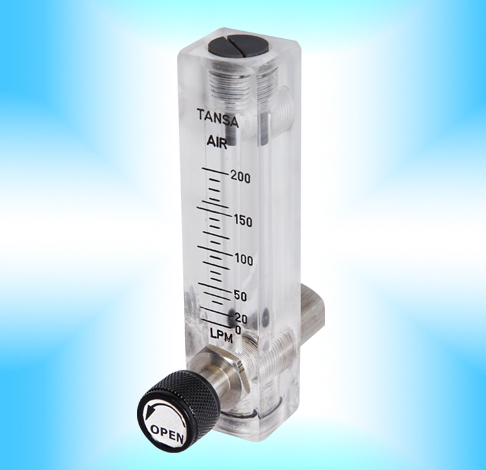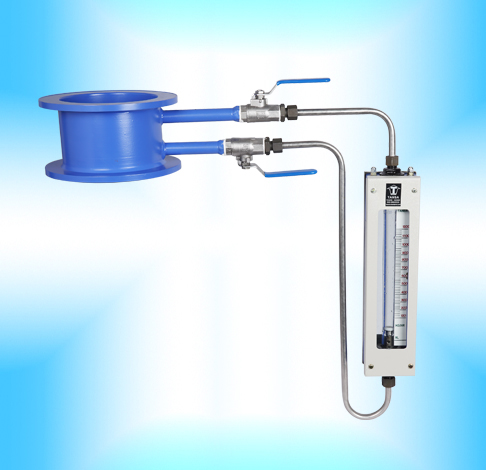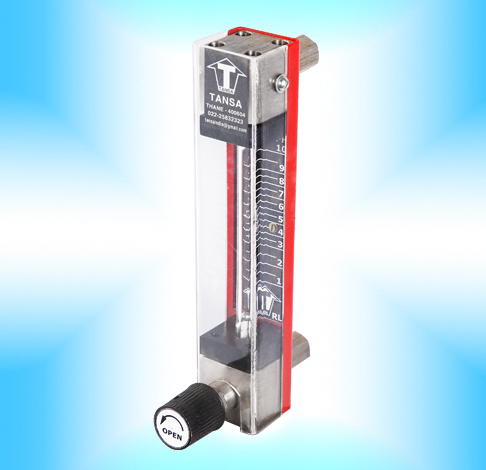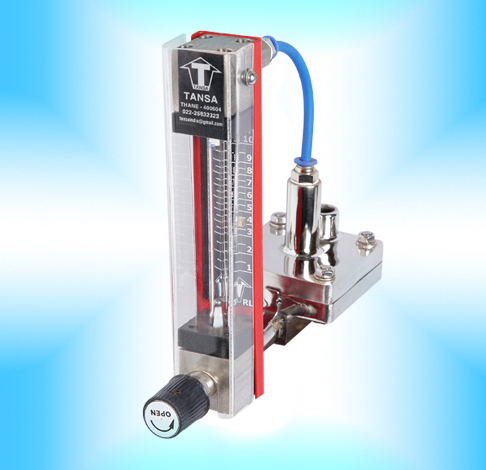Advantages of Rotameter
A rotameter requires no external power or fuel or any sort of energy, it uses only the inherent properties of the fluid, along with gravity, to measure flow rate.
It operates on 1st principle hence accurate and repeatability of the indications is very good.
A rotameter is also a relatively simple device that can be mass manufactured out of low cost materials, allowing for its widespread use.
Pressure loss due to the rotameter is minimal and relatively constant because the area through the tapered tube increases with flow rate. This results in reduced pumping costs.
The first variable area meter with rotating float was invented by Karl Kueppers in Aachen in 1908. This is described in the German patent 215225. Felix Meyer found the first industrial company "Deutsche Rotawerke GmbH" in Aachen recognizing the fundamental importance of this invention. They improved this invention with new shapes of the float and of the glass tube. Kueppers invented the special shape for the inside of the glass tube that realized a symmetrical flow scale.
The brand name Rotameter was registered by the British company GEC Rotameter Co, in Crawley, and still exists, having been passed down through the acquisition chain: KDG Instruments, Solartron Mobrey, and Emerson Process Management (Brooks Instrument). Rota with their "Rotamesser" are now owned by Yokogawa Electric Corp.
The brand name Rotameter was registered by the British company GEC Rotameter Co, in Crawley, and still exists, having been passed down through the acquisition chain: KDG Instruments, Solartron Mobrey, and Emerson Process Management (Brooks Instrument). Rota with their "Rotamesser" are now owned by Yokogawa Electric Corp.
A rotameter consists of a tapered tube, typically made of glass with a 'float'. The float moves in a tapered Glass Tube because of the drag force of the flow and buoyancy force of the fluid and it is pulled down because of the gravitational force acting on the float and viscosity of the fluid. The float attends a steady condition when the upwards and downwards forces acting on the float gets balanced. In short the forces attends the state of equilibrium. Drag force for a given fluid and float cross section is a function of flow speed squared only, see drag equation.
A higher volumetric flow rate through a given area results in increase in flow speed and drag force, so the float will be pushed upwards. However, as the inside of the rotameter is cone shaped (widens), the area around the float through which the medium flows increases, the flow speed and drag force decrease until there is mechanical equilibrium with the float's weight.
Floats are made in many different shapes, with spheres , ellipsoids and conical being the most common. Involutes shaped cuts on the periphery rotate the float along its vertical axis. This rotation prominently indicates the float position and also confirms that the float is not stuck in the tapered glass tube. Readings are usually taken at the top of the widest part of the float; the center for an ellipsoid, or an engraved marking on the float. Some manufacturers use a different standard.
Note that the "float" does not actually float in the fluid: it has to have a higher density than the fluid, otherwise it will float to the top even if there is no flow.
A higher volumetric flow rate through a given area results in increase in flow speed and drag force, so the float will be pushed upwards. However, as the inside of the rotameter is cone shaped (widens), the area around the float through which the medium flows increases, the flow speed and drag force decrease until there is mechanical equilibrium with the float's weight.
Floats are made in many different shapes, with spheres , ellipsoids and conical being the most common. Involutes shaped cuts on the periphery rotate the float along its vertical axis. This rotation prominently indicates the float position and also confirms that the float is not stuck in the tapered glass tube. Readings are usually taken at the top of the widest part of the float; the center for an ellipsoid, or an engraved marking on the float. Some manufacturers use a different standard.
Note that the "float" does not actually float in the fluid: it has to have a higher density than the fluid, otherwise it will float to the top even if there is no flow.
Due to its use of gravity, a rotameter must always be vertically oriented and right way up, with the fluid flowing upward.
Due to its reliance on the ability of the fluid or gas to displace the float, graduations on a given rotameter will only be accurate for a given substance at a given temperature. The main property of importance is the density of the fluid; however, viscosity may also be significant. Floats are ideally designed to be insensitive to viscosity; however, this is seldom verifiable from manufacturers' specifications. Either separate rotameters for different densities and viscosities may be used, or multiple scales on the same rotameter can be used.
Rotameters normally require the use of glass (or other transparent material), otherwise the user cannot see the float. This limits their use in many industries however manufacturers have developed Metal Tube Rotameters wherein the floats are magnetic, no where glass parts are used. The position of the float is sensed by a rotating magnetic wheel or oscillating magnetic arm and is indicated on a dial.
Rotameters are not easily adapted for reading by machine; although magnetic floats that drive a follower outside the tube are available. Nowadays transmitters giving 4-20 mA out-puts are also available.
Due to its reliance on the ability of the fluid or gas to displace the float, graduations on a given rotameter will only be accurate for a given substance at a given temperature. The main property of importance is the density of the fluid; however, viscosity may also be significant. Floats are ideally designed to be insensitive to viscosity; however, this is seldom verifiable from manufacturers' specifications. Either separate rotameters for different densities and viscosities may be used, or multiple scales on the same rotameter can be used.
Rotameters normally require the use of glass (or other transparent material), otherwise the user cannot see the float. This limits their use in many industries however manufacturers have developed Metal Tube Rotameters wherein the floats are magnetic, no where glass parts are used. The position of the float is sensed by a rotating magnetic wheel or oscillating magnetic arm and is indicated on a dial.
Rotameters are not easily adapted for reading by machine; although magnetic floats that drive a follower outside the tube are available. Nowadays transmitters giving 4-20 mA out-puts are also available.

